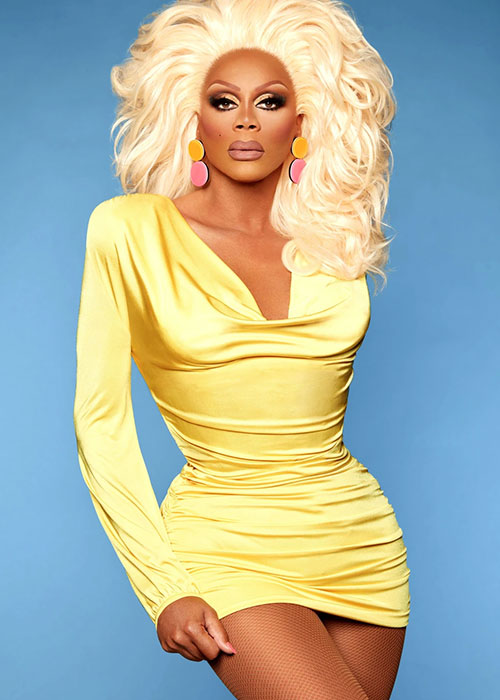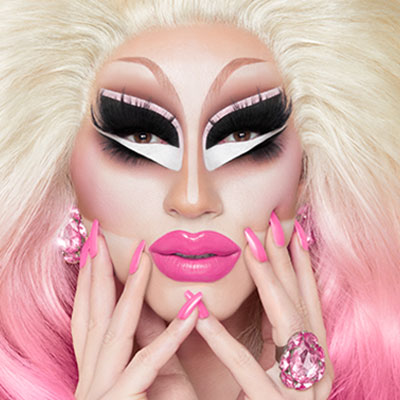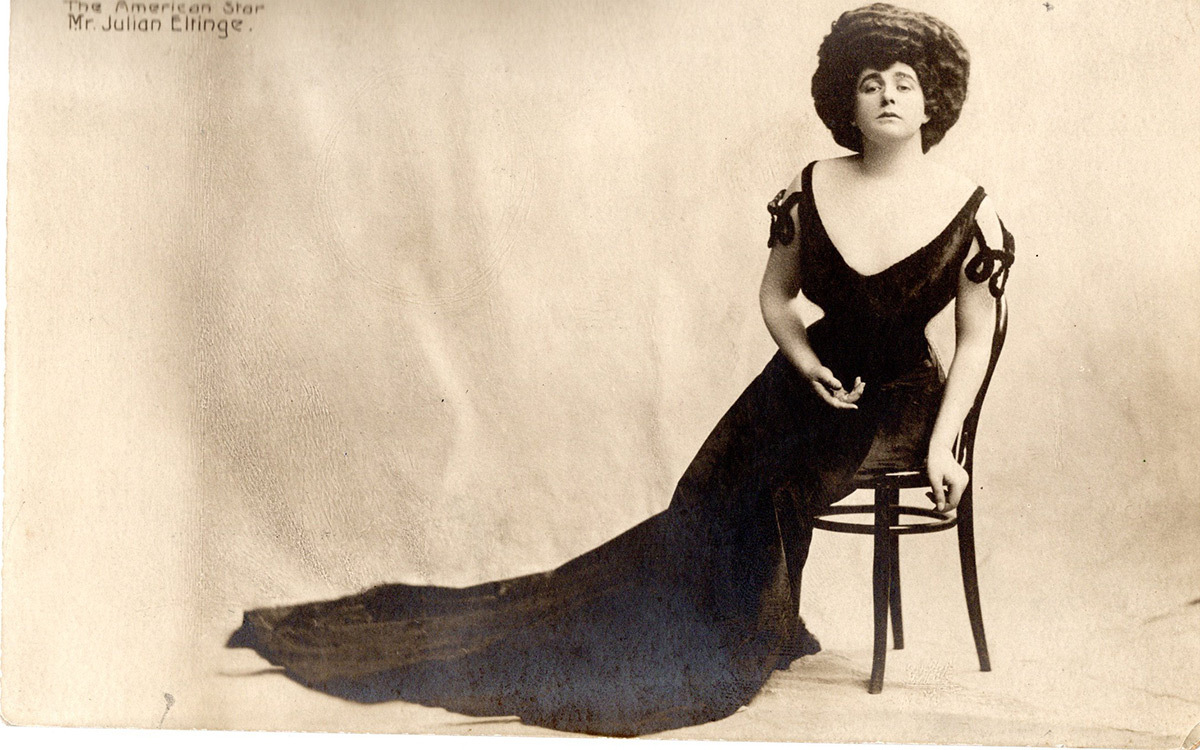Drag Queens and Drag Kings
A drag queen is a person, typically a male, who dresses in elaborate and exaggerated feminine clothing and often adopts a flamboyant and theatrical persona. Drag queens may use makeup, wigs, costumes, and accessories to create glamorous and exaggerated female appearances. A drag king is a person, typically female, who dresses in clothing and adopts a persona that represents a male character or identity, often in an exaggerated or theatrical manner. Similar to drag queens, drag kings use makeup, costumes, and performance to transform themselves into their chosen male personas. Both drag queens and kings are often associated with performing on stage, lip-syncing to music, and entertaining audiences with humor, wit, and charisma. Drag play a significant role in LGBTQ+ culture and are known for challenging traditional gender norms and stereotypes while celebrating self-expression and creativity. It's important to note that not all drag queens identify as transgender; many do it as a form of artistic expression and entertainment.
“Overview of drag culture, its role in LGBTQ+ culture, and gender performance.”
Drag transcends the boundaries of gender performance and extends its influence into the realm of societal norms, challenging taboos while elevating the art of performance. With its rich history and potent political significance, drag stands as a resounding testament to its enduring relevance as a form of creative expression.

In the world of drag, artists have the freedom to embody their authentic selves or embrace entirely different personas, showcasing the limitless possibilities within this art form. Undeniably, drag has played an instrumental role in shaping the modern art landscape, and its transformative impact endures, shaping the creative landscape of today.
History of Drag
Drag boasts a culturally rich heritage, embracing cross-dressing performances and satirical takes on conventional gender norms and sexuality. Its roots extend back to ancient times, with men portraying female roles in Greek tragedies and Shakespeare's renowned cross-dressing portrayals. Baroque operas also featured early instances of drag.
“The evolution of drag culture from ancient times to the present.”
The legacy of drag can be traced to ancient Egypt, where influential queens like Cleopatra adopted male attire to assert dominance and seize power. This art form spans centuries, with each era contributing significantly to the contemporary acceptance and success of drag.
During the vibrant 1920s, drag underwent a transformation, transitioning from ensemble performances to a distinctive form of entertainment known as "Vaudeville." This genre revolved around female impersonation, blending elements of burlesque, comedy, music, and dance. Notably, Vaudeville introduced the world to its first renowned drag queen, Julian Eltinge, who achieved unprecedented fame, even surpassing Charlie Chaplin in earnings.
This period coincided with the era of Prohibition in the United States, lasting from 1920 to 1933, which prohibited alcohol production and consumption. It was during this time that underground clubs emerged as havens for gay men seeking self-expression. These clandestine establishments provided a sense of liberation and acceptance, serving as a utopian refuge for LGBTQ+ individuals regardless of their race, gender, or identity.

However, this era of relative freedom was short-lived. As drag gained popularity, law enforcement began cracking down on the underground venues. In a significant turn of events, female impersonation was entirely banned in New York, effectively bringing an end to the Vaudeville era.
World War II ushered in a resurgence of heteronormative culture, which marginalized drag and the LGBTQ+ community. Drag artists and queer individuals continued to battle against stereotypes, unjust laws, societal judgments, and a lack of basic human rights. This struggle persisted until the 1970s when a significant shift in mentality began to take shape.
In the 1970s, drag experienced a revival in certain parts of New York, marked by the emergence of some of the largest drag balls. These extravagant competitions required participants to showcase their finest drag attire and skills to impress judges and vie for numerous awards.
With the increasing acceptance of the LGBTQ community in society, the presence of drag gradually reclaimed its place in the mainstream spotlight. Iconic musicians such as David Bowie made cross-dressing and gender-bending aesthetics central themes in their early music videos. In the year 2009, the singer and actor RuPaul Andre Charles took a momentous step by launching his inaugural drag reality show.
What are drag shows?
Drag shows are live performances in which drag artists, often referred to as drag queens or drag kings, showcase their talent, creativity, and artistry. These shows typically involve performers dressing in elaborate and glamorous costumes, using makeup and wigs to create exaggerated and often gender-bending looks. Drag shows can encompass a wide range of entertainment, including:
Lip-Syncing: Drag performers often lip-sync to popular songs or engage in theatrical monologues, providing entertainment through their dramatic interpretations.
“Explanation of drag shows and their varied forms of entertainment.”
Comedy: Many drag queens and kings incorporate humor into their acts, delivering stand-up comedy routines or comedic skits that entertain and amuse the audience.
Dance: Drag shows may feature dance performances, with drag artists displaying their dance skills in choreographed routines.
Fashion: Drag queens are known for their extravagant and stylish outfits, and fashion showcases are a common element of drag shows, where the performers strut their stuff on the runway.

Impersonations: Some drag performers specialize in celebrity impersonations, emulating famous personalities and adding their own unique flair.
Storytelling: Drag can also involve storytelling, with performers narrating personal experiences or sharing messages of empowerment and acceptance.
Variety Acts: Drag shows often incorporate a mix of different talents, such as singing, dancing, comedy, and more, creating a diverse and engaging entertainment experience.
Drag shows serve as a platform for self-expression, challenging gender norms, and celebrating individuality. They are an integral part of LGBTQ+ culture and have gained popularity in mainstream entertainment, attracting diverse audiences who appreciate the creativity and artistry of drag performers.
Are drag queens cross dressers?
Drag queens may engage in cross-dressing as part of their performance, but they are not necessarily the same as cross-dressers.
Drag queens are performers who adopt exaggerated feminine personas, often including the use of elaborate makeup, wigs, and glamorous outfits to create a character for their stage or entertainment appearances. They typically identify as male or non-binary and use drag as a form of artistic expression and entertainment. The goal of drag queens is to entertain and often challenge gender norms and stereotypes through their performances.
“Differentiation between drag queens and cross-dressers.”
Cross-dressers, on the other hand, are individuals who may occasionally or regularly wear clothing traditionally associated with a different gender than the one they were assigned at birth. Cross-dressing can be a personal choice and may or may not be related to performance or entertainment. Cross-dressers may identify with the gender they were assigned at birth or have a different gender identity.

While there can be overlap between drag queens and cross-dressers when it comes to the act of dressing in clothing typically associated with the opposite gender, their motivations and contexts for doing so differ. Drag queens use cross-dressing as a performance art, whereas cross-dressers may do so for personal expression, comfort, or identity exploration.
Are drag queens trans gender?
There is a distinct difference between being a drag queen/king and being transgender. Drag queens are individuals, typically male or non-binary, who dress in exaggerated feminine attire and adopt feminine personas for the purpose of entertainment and self-expression. Their performance as drag queens is often separate from their gender identity.
Transgender individuals, on the other hand, have a gender identity that differs from the sex assigned to them at birth. For example, a transgender woman is someone who was assigned male at birth but identifies and lives as a woman. Being transgender is about one's deeply held sense of gender identity, which may or may not involve cross-dressing or performing as a drag queen.
“Clarifying the distinction between being a drag queen and being transgender.”
While some transgender individuals may also engage in drag as a form of self-expression or as a creative outlet, being transgender and being a drag queen are distinct aspects of a person's identity. It's essential to respect and understand that gender identity is a personal and deeply felt experience, and not all individuals who perform in drag are transgender.
Tucking
Tucking is the discreet technique of concealing male genitalia beneath female attire, allowing individuals to appear as women. This practice aids in creating the visual illusion of a lack of male anatomy, enhancing the overall feminine appearance, including breasts, hips, and buttocks.
“Exploring the practice of tucking in the drag queen community.”
Tucking is a prevalent practice within the drag queen community, but it can be somewhat challenging for beginners. Many drag queens employ a method where they wear underwear and then pull it tightly to flatten the groin area, achieving the desired effect. This straightforward approach to tucking involves wearing underwear and employing tension to minimize the appearance of the crotch.
Famous drag queens
RuPaul
RuPaul Charles, known simply as RuPaul, is arguably the most famous American drag queen as well as singer, songwriter, actor, and television personality. RuPaul gained prominence in the 1990s with the release of the dance-pop single "Supermodel (You Better Work)" and became widely recognized as the host and executive producer of the reality competition show "RuPaul's Drag Race." The show has been highly successful and has contributed to a greater acceptance and understanding of drag culture. RuPaul is often referred to as the "Queen of Drag" and is an influential figure in the LGBTQ+ community.

Trixie Mattel
Trixie Mattel is the stage name of Brian Michael Firkus, an American drag queen, singer, songwriter, comedian, and television personality. Trixie Mattel rose to fame as a contestant on the seventh season of "RuPaul's Drag Race" in 2015. While she didn't win that season, she gained a significant following and became known for her unique and exaggerated makeup style, which often features exaggerated doll-like features.

Trixie Mattel later went on to win the third season of "RuPaul's Drag Race All Stars" in 2018, solidifying her status as one of the most successful and beloved queens to come from the franchise. In addition to her drag career, she has released music albums, performed in comedy shows, and co-hosted the popular web series "UNHhhh" alongside fellow "Drag Race" alum Katya Zamolodchikova. Trixie Mattel is known for her comedic talents and distinctive Barbie-inspired aesthetic.
Divine
Divine, whose real name was Harris Glenn Milstead, was an iconic American drag queen, actor, and singer. Divine is known for being a key figure in the world of underground and cult cinema, particularly in the films of director John Waters. Some of Divine's most famous roles were in Waters' films like "Pink Flamingos," "Female Trouble," and "Polyester."
Divine's drag persona was known for its outrageous and provocative style, which often pushed boundaries and challenged societal norms. Divine's performances and appearances were characterized by over-the-top makeup, wigs, and costumes, as well as a willingness to engage in shocking and taboo-breaking acts on screen.
Sadly, Divine passed away in 1988, but his legacy as a pioneering drag queen and performer continues to influence and inspire drag culture and LGBTQ+ representation in entertainment. Divine's impact on the drag community and the broader world of pop culture is significant and enduring.
Julian Eltinge
Julian Eltinge was an American stage and silent film actor, as well as a popular female impersonator in the late 19th and early 20th centuries. He was born on May 14, 1881, and passed away on March 7, 1941. Julian Eltinge was known for his remarkable ability to transform himself into convincing female characters, and he often performed in drag.
“Highlighting notable figures in the drag queen community.”
During his career, Julian Eltinge became one of the highest-paid actors in the United States and was widely celebrated for his talent. He appeared in both vaudeville shows and Broadway productions, becoming a major star of his time. His performances included comedy and musical numbers, and he was noted for his glamorous and convincing portrayals of women.

Julian Eltinge's popularity extended to the silent film era, where he appeared in several films, further solidifying his status as a notable figure in entertainment history. He played a significant role in breaking down gender barriers in performance and paved the way for future generations of drag queens and female impersonators.
Lady Bunny
Lady Bunny is the stage name of Jon Ingle, an American drag queen, comedian, and DJ. She is a prominent figure in the world of drag and is known for her larger-than-life personality, comedic talent, and extravagant costumes. Lady Bunny is particularly famous for her role as the founder of the annual "Wigstock" drag festival in New York City, which was a key event in the drag community for many years.
Lady Bunny has been a fixture of the New York City drag scene for decades and has performed in numerous drag shows and events. She is known for her witty and irreverent humor and often incorporates political and social commentary into her performances.
In addition to her live performances, Lady Bunny has made appearances on television and in films. She has also been an outspoken advocate for LGBTQ+ rights and issues. Lady Bunny is considered a drag legend and has played a significant role in the development of drag culture in the United States.
